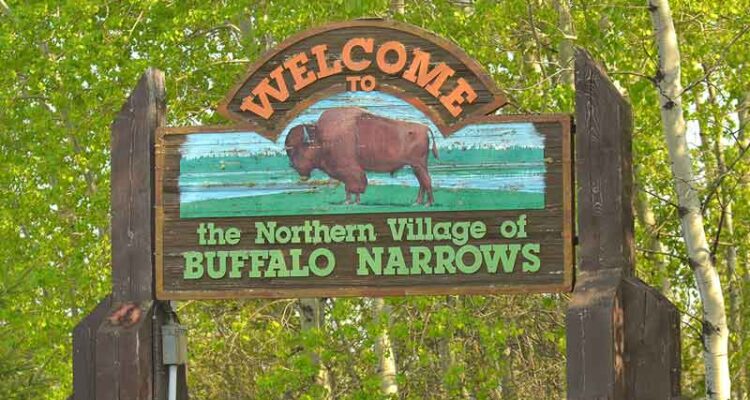
As COVID-19 slowly but surely is brought under control in Saskatchewan’s Northwest, the Northern Village of Buffalo Narrows is one of many communities remaining as vigilant as ever until the pandemic is over once and for all.
“Things are looking better for the Northwest, and specifically for us,” Buffalo Narrows mayor Melanie Aubichon remarked. “Were still sitting in the single digits in terms of confirmed COVID-19 cases, and we’ve also had a few recoveries. It hit some of the other communities much worse than ours, but, of course, population plays a big factor in that too.”
Aubichon went on to say the key to overcoming the virus is to follow all health measures and safety guidelines issued by the province as well as by local leadership, and to simply take things day-by-day.
“Much like other communities, we have checkstops in place at the north and south ends of town,” Aubichon continued. “These checkstops are manned 24/7 and have been in place for the past six weeks. Being able to monitor who is coming and going from the community has helped, especially when there isn’t as much traffic as there normally would be.”
As the risk of transmission of COVID-19 has regionalized in the Northern Saskatchewan Administration District, the public health order was amended earlier this week to only have travel restrictions applied to the Northwest region. Travel to and from all other areas of the North – commercial, domestic and recreational as outlined in the Reopen Saskatchewan plan – was permitted starting Tuesday (May 19).
The public health order will include clarity for Northwestern community leaders, residents and checkpoint staff to ensure people can obtain essential goods and services when travelling for medical purposes. Remaining under the current public health order restricting non-essential travel are: Beauval, Buffalo Narrows, Canoe Lake Cree First Nation, Clearwater River Dene Nation, Cole Bay, Dillon, Dore Lake, English River First Nation, Green Lake, Ile-a-la Crosse, La Loche, Patuanak, Turnor Lake and others in the immediate area.
by Phil Ambroziak